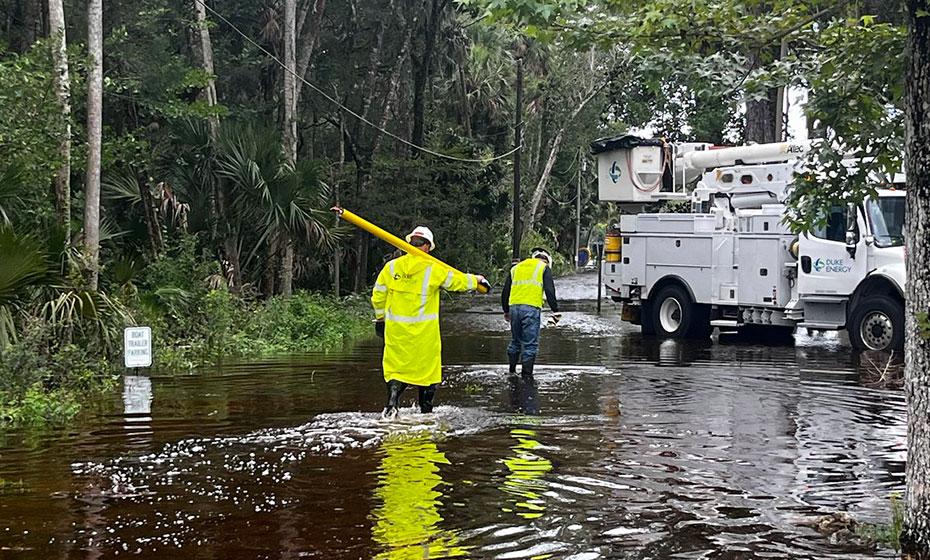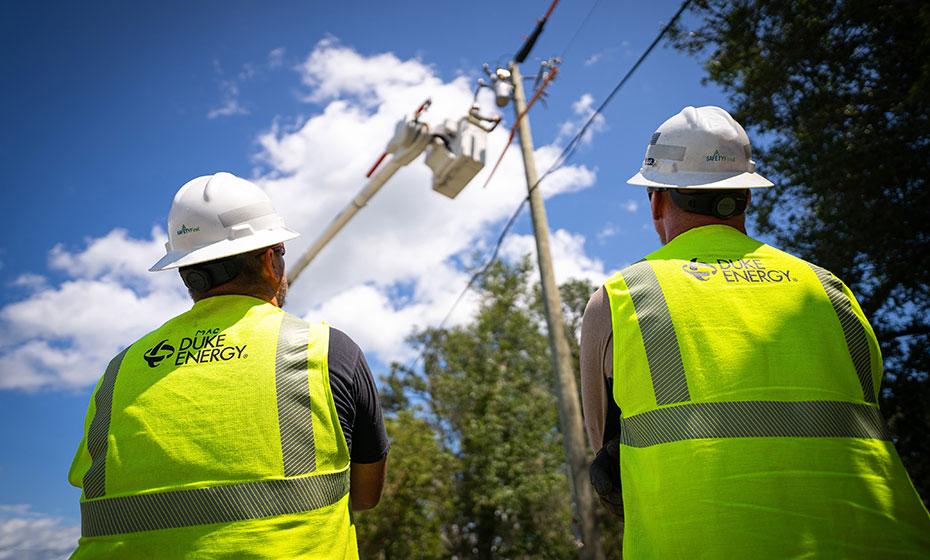Grid Investments Enable Quick Response to Hurricane Debby
Advanced technology and year-round grid strengthening work help Duke Energy restore power for most customers within 24 hours
By Gina DiPietro
When Hurricane Debby unleashed its fury on Florida and then carved a path through the Carolinas as a tropical storm, Duke Energy’s swift response was a testament to the power of preparation.
Grid strengthening measures and advanced technologies helped more than 10,000 line and tree workers in the field restore power to most customers within 24 hours of Debby’s arrival in each service area.
Here's how our investments are keeping communities resilient amid another storm season:
Strengthening the grid to reduce storm impacts
The company makes strategic upgrades year-round to strengthen the energy grid, reduce outages and restore power faster for customers. Crews trim vegetation near power lines and strategically place outage-prone lines underground to minimize recurring disruptions for customers.
Duke Energy is also upgrading poles and wires to better withstand severe weather impacts; ongoing improvements include replacing wooden transmission poles with reinforced steel and installing stronger wires in some coastal and wind-vulnerable areas.
These infrastructure improvements will also help the company expand its power transmission capacity, important to meeting an extraordinary increase in demand for electricity, as well as innovative technologies like energy storage, electric vehicles and at-home charging stations.
Smart technology minimizes customer disruptions
As major storms become more frequent and intense, Duke Energy continues to expand its network of smart, self-healing technology. It works a lot like the GPS in your car – rerouting power around problems to reduce outage time for customers the way a GPS reroutes drivers around traffic accidents to avoid long delays.
More than half of customers are served by self-healing and automated restoration capabilities across six states. That represents around a 65% increase in customers served by these advanced technologies over the last two years.
During this latest storm, the company’s self-healing technology saved more than 500,000 hours of total outage time and automatically restored approximately 150,000 customer outages. A more resilient electric grid also frees up line teams and other essential workers who assist with storm response.
Duke Energy restored 93% of customers within 24 hours of Hurricane Debby making landfall in Florida’s Big Bend. And of the Carolinas customers who experienced an outage, 95% were restored within a day of Debby’s arrival.
“We know how much our customers depend on us to safely restore power quickly as possible after a major storm, and we appreciated their patience and support as we responded to power outages from Hurricane Debby,” said Scott Batson, senior vice president and chief power grid officer at Duke Energy. “Our crews worked through challenging conditions to deliver on those expectations, and we are grateful for the combined efforts of employees and contractors, many of whom traveled from out of state, to assist communities impacted by the storm.”
Flood walls in place to help keep substations dry
When Tropical Storm Debby made its way up the coast, flood walls were ready to help keep flood-prone substations in the Carolinas dry. Crews were prepared, too, with equipment and remote technology that enables them to monitor and access equipment during storms.
Substations are a critical part of the grid – they take the electricity carried by high-voltage lines from a power plant and convert it to a lower voltage compatible with smaller power lines in communities. If a substation is down, it can mean power outages for thousands of people.
With lessons learned from back-to-back historic floods across eastern North Carolina and the Pee Dee region of South Carolina in 2016 and 2018, the company reinforced substations and essential equipment around 13 substation perimeters in recent years.
Upgrades include flood barriers made of reinforced high-density polyethylene, and pumps inside the walled-off area help drain away rainwater, while stairs over the wall allow substation technicians to get safely inside if approaching by boat.
Year-round storm preparations
The company also credits its rapid response to Debby to year-round storm preparations and decades of lessons learned and key collaborations with state, local and community response agencies.
Ahead of the storm, crews and resources were staged near likely affected areas to allow for a quick and safe response to potential outages. In addition to its convoy of local crews, Duke Energy was able to draw on other resources from its service territories in Indiana, Kentucky and Ohio, as well as contractors.
In total, more than 10,000 line and tree workers, damage assessors and support teams deployed across Florida and the Carolinas, working alongside power plant workers, grid operators and storm response teams to restore power to around 850,000 customers in those states.
“Our goal is always to be ready to respond when a storm strikes,” Batson said, “and the combination of our people, advanced technology and a storm response process that we work to improve after every storm helps us maintain that readiness to serve our customers effectively when they count on us most.”
View original content here.





